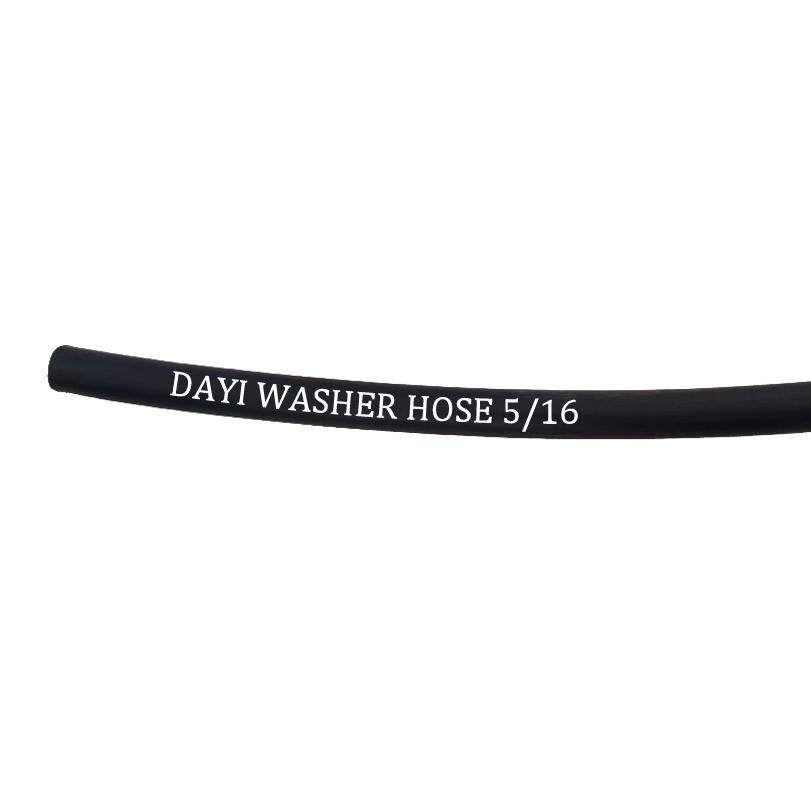335345435
Aug . 13, 2024 22:25 Back to list
Choosing the Right Rubber Hose Manufacturer for Your Industrial Needs and Quality Assurance
The World of Rubber Hose Manufacturing An Overview
Rubber hoses are pivotal components in various industries, playing critical roles in fluid conveyance, transportation, and even safety measures. The rubber hose manufacturing sector has seen remarkable advancements over the years, contributing significantly to industrial efficiency and product durability. Understanding the intricacies of rubber hose production can shed light on its importance in today’s economy.
Understanding Rubber Hoses
Rubber hoses are flexible tubes made primarily from rubber and are designed to transport fluids, gases, and sometimes solids. Their versatility makes them essential for numerous applications, including agriculture, automotive, construction, and even healthcare. Different types of rubber hoses are manufactured to meet specific requirements, such as temperature resistance, pressure durability, and chemical compatibility.
Materials and Manufacturing Process
The manufacturing of rubber hoses typically starts with raw materials, primarily rubber compounds that are mixed with additives to enhance performance. The common types of rubber used include natural rubber, synthetic rubber, and specialized rubber blends tailored for unique conditions. The choice of material impacts the hose's flexibility, strength, and resistance to environmental factors.
The manufacturing process generally involves several key steps
1. Compounding The raw rubber is blended with fillers, pigments, and chemicals to achieve desired properties. The formulation is critical, as it determines the hose's resistance to heat, pressure, and chemicals.
2. Extrusion The compounded rubber is then fed into an extruder, which shapes it into a continuous hose. The extrusion process can also include reinforcing materials, such as textile or steel wire, to enhance the hose’s strength and flexibility.
rubber hose manufacturer

3. Curing After extrusion, the hoses need to be cured (vulcanized) to set their shape and enhance durability. This chemical process involves heating the rubber to create cross-links between the polymer chains, making it resistant to wear and tear.
4. Testing Quality control is essential in hose manufacturing. Each batch of rubber hoses undergoes rigorous testing for pressure, flexibility, and durability to ensure they meet industry standards.
Importance of Quality Control
Quality control in rubber hose manufacturing cannot be overstated. Hoses often operate under extreme conditions, facing high pressures, corrosive substances, and abrasive materials. A failure in a rubber hose can lead to catastrophic consequences, including equipment damage, safety risks, and costly downtime. Manufacturers today deploy advanced testing methods, such as pressure testing, burst testing, and environmental simulation, to ensure the reliability of their products.
Emerging Trends
The rubber hose manufacturing industry is evolving, driven by technological advancements and increasing environmental awareness. Companies are now investing in sustainable practices, such as using recycled materials and reducing emissions during production. Moreover, the rise of automation and industry 4.0 technologies is streamlining production processes, enhancing efficiency, and improving product customization.
Furthermore, as industries seek to innovate, manufacturers are developing hoses that are not only versatile but also smarter, integrating IoT technologies that allow for real-time monitoring of pressure and flow rates.
Conclusion
Rubber hose manufacturing is a crucial segment of many industries, balancing the demands for durability, flexibility, and safety. As technology continues to evolve, so too will the capabilities of rubber hoses, leading to new applications and enhanced reliability. Understanding the processes and innovations within this industry reveals its significant contribution to modern infrastructure and technologies, reinforcing the critical role rubber hoses play in our daily lives.
-
SAE 100 R17 Black Smooth Cover Hydraulic Hose
NewsMar.07,2025
-
SAE 100 R17 Black Smooth Cover Hydraulic Hose
NewsMar.07,2025
-
SAE 100 R17 Black Smooth Cover Hydraulic Hose
NewsMar.07,2025
-
SAE 100 R17 Black Smooth Cover Hydraulic Hose
NewsMar.07,2025
-
SAE 100 R17 Black Smooth Cover Hydraulic Hose
NewsMar.07,2025
-
steel wire braided hydraulic hose
NewsMar.07,2025



